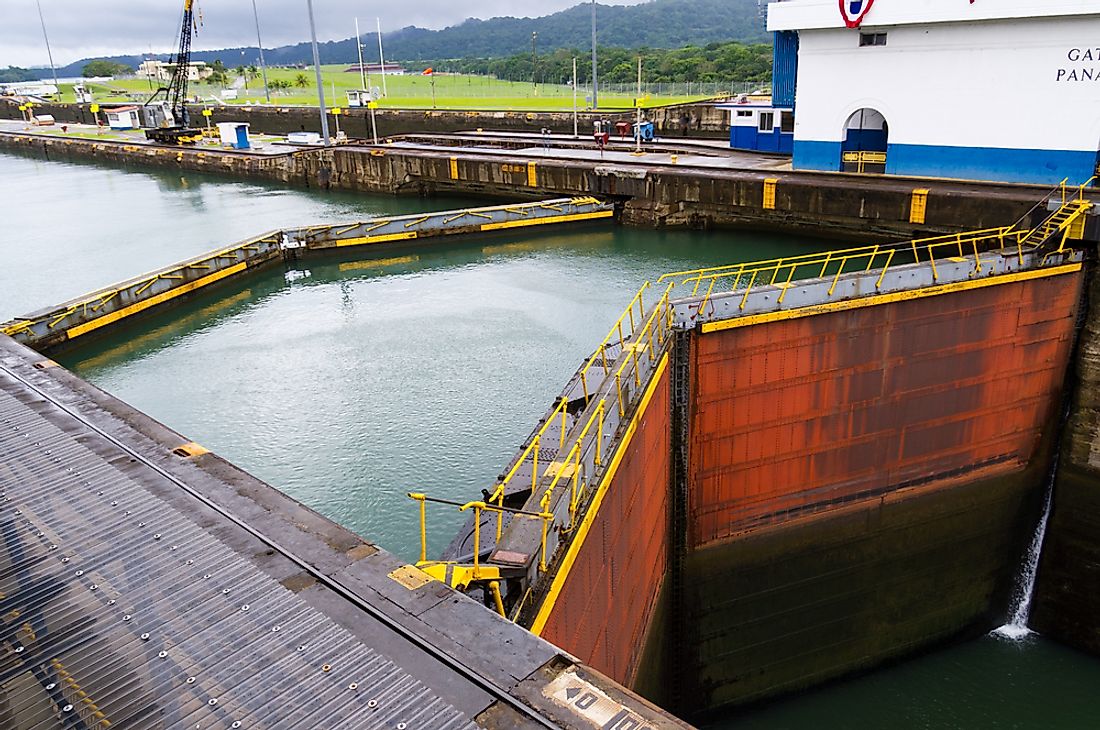Who Owns the Panama Canal?

The Panama Canal is a marvel of human engineering found in the Central American state of Panama. It connects the Pacific Ocean with the Atlantic Ocean and the canal is important in world trade since ships laden with important goods like oil pass through the Panama Canal as they head to their destinations around the world. The canal has come a long way since the time it was built to being at the center of ownership tussles between the United States and Panama. Today, the canal is managed by the Panama Canal Authority and continues to shape international trade and relations. It is considered one of the 7 Wonders of the Modern World.
Initial French Construction Attempts
The idea of building a canal in Panama was credited to the Spanish explorer Vasco Nunez De Balboa who discovered the Isthmus of Panama. The discovery of this small strip of the land inspired the search for means to build a path for ships to move across from the Atlantic into the Pacific. However, building such a waterway was proved to be impossible and abandoned until the 1800s when the French, through Ferdinand de Lesseps’ company, attempted to construct a canal. The project had to be abandoned after incurring high costs and losing a lot of workers to deaths caused by tropical diseases like malaria. Despite the extensive work put by another French company that took over from the de Lesseps company, they had to abandon the project after facing similar challenges.
American Acquisition
The American government took over from the French in 1901 after extensive lobbying by a French engineer who managed to convince them that Panama was a safer choice than Nicaragua. Although Colombia refused to recognize the acquisition, the Americans were able to outmaneuver the Colombian hurdle by encouraging, recognizing and offering US military protection in favor of Panama’s independence. To prevent war, the US and Colombia signed a treaty that settled some of the problems. Further acquisition of French property continued alongside the construction of the canal. The construction was complete in 1914 and it had consumed a total of $500,000,000.
Transfer of Ownership
Panamanian citizens were critical of the American control of the canal which they saw as their own. Their protests resulted in an increase of American military personnel at the canal and security rings were erected to secure the facilities from Panamanian encroachment. Riots and protests culminated through the signing of a treaty between the then US President Jimmy Carter and Panama President Omar Torrijos in 1977, which guaranteed the neutrality of the canal and full Panamanian control after 25 years. On December 31, 1999, the full control was achieved when the American government handed over control to the Panama Canal Authority.
The Panama Canal Today
The Panama Canal has undergone structural improvements to enable it to handle large ships known as mega ships, seven years after the hand-over. The upgrades are necessary since more than 13,000 ships use the canal every year and the Panamanian government gets most of its revenue from the canal. Toll fees that are charged based on the size of the ship and the cargo it is carrying. The revenue is estimated to be at $1.8 billion annually and it goes a long way to help the government meet its obligation to the Panamanian citizens.











